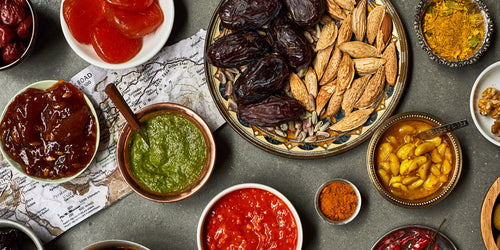Your Cart is Empty

You may have a favorite ratio for your martini. Or a mold for those big perfectly cube-shaped pieces of ice like they have at fancy bars. These are great places to start, but the once rarified world of craft-cocktail culture is just plain culture these days, so if you’re entertaining with drinks at home, now’s a nice time to level-up your bartending skills.
It pays to have a guide, and you can’t ask for better ones than Carey Jones and John McCarthy, authors of the brand-new book Be Your Own Bartender: A Surefire Guide to Finding (and Making) Your Perfect Cocktail. Jones is an award-winning food and drink journalist for the likes of Food & Wine, Saveur, and Vogue. Her husband McCarthy is a bartender who’s designed some of the spirits world’s most impressive cocktail menus. As a team, they’re famous for penning authoritative yet friendly guides to improving your home bartending game.
Be Your Own Bartender is their most innovative guide to date. Part cookbook, part choose-your-own-adventure, it demystifies complex cocktail recipes into simple and fun-to-navigate flowcharts that help you find a drink by flavor, ingredient, season, or mood. Imagine on-demand advice from your favorite bartender on what to order at a new bar—that’s this book.
We asked Jones and McCarthy to share some advice on easy ways to beef up your own bar—that don’t involve spending hundreds of dollars on obscure spirits you’ll rarely use. Here are their tips for your holiday cocktail recipes and beyond. — Caravan eds.
Four ways to boost your bar
Embrace bitters
We like to think of bitters as the spices of the cocktail world. Even when used in small doses, they can completely transform a drink.
The basics—orange bitters and Angostura bitters—belong in every bar. But it’s also fun to branch out. Take these Fee Brothers Aztec chocolate bitters. We use them in a drink we call “One Kiss at Midnight” for a touch of chocolate to go with rich blended Scotch, toasty champagne, and just a bit of cinnamon honey.
Lavender bitters add a subtle floral element to cocktails like a classic French 75 (or our Rosemary 76). And anise-tinged Peychaud's works perfectly in a Mediterranean-inspired gin cocktail with earthy, citrusy sumac.
Infuse your own bottles
It seems every bar these days has some kind of house-infused spirit, which sounds complicated, but isn’t at all. Infusing alcohol is as easy as adding a spice or herb to a bottle, letting it steep, and straining it out.
We make a green tea vodka by steeping 80-proof vodka with green tea for an hour;we stir it with bianco vermouth, Cointreau, and a bit of orange blossom water for a floral martini, and shake it with lemon, honey, and orange marmalade for a bright, frothy sour. Whole cloves for a clove-infused bourbon is another favorite: delicious in whiskey cocktails, in a shot on its own, or to booze up a hot cider.
Make a spiced syrup
There are lots of ready-to-mix cocktail syrups out there, but it’s also dead-easy to make your own. We make a tongue-tingling syrup by steeping Sichuan peppercorns in hot water to extract their citrus and camphor flavor, then add sugar to sweeten and stabilize. Other syrups use honey or raw sugar as a base.
These syrups last at least two weeks in your fridge (and we use them a lot longer). If they're not moldy, they're still good!
And don’t forget your sours
Citrus fruits are the classic way to add acidity to cocktails, but they’re not the only way. Play around with verjus, the light and tart juice of sour grapes used to make balsamic vinegar, as a substitute for lemon or lime. As it's grape-based, it pairs particularly well with anything else that is, too, from grape brandies like Cognac to the unaged brandy pisco to vermouths, sherries, and sparkling wines. Or try red sorrel leaves, which add not just a pleasing tart astringency, but also a gorgeous red color.
Ready for a drink?
Stop by our bar collection, then try these recipes from McCarthy and Jones.
Recipe: Pineapple olorosso cobbler
Recipe: Sorrel siren






